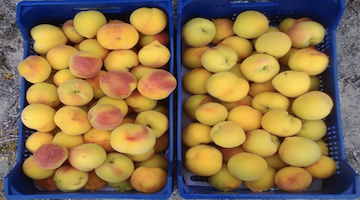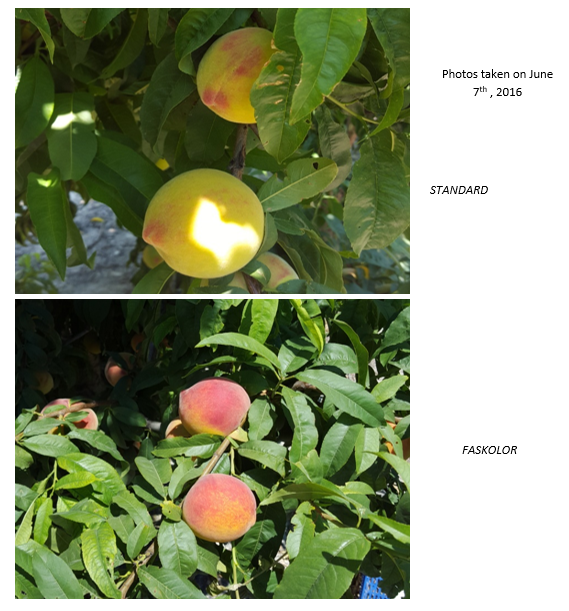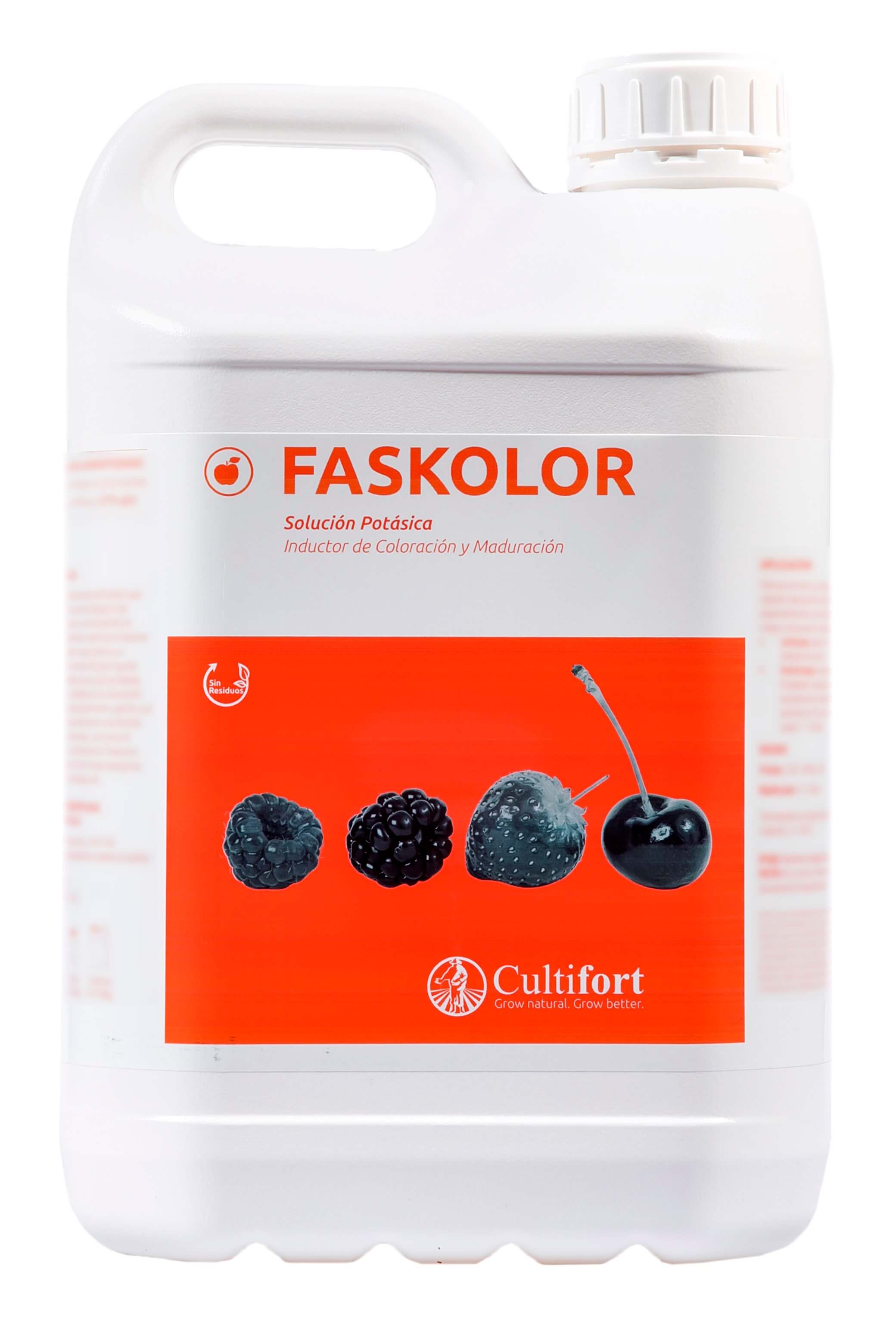The coloring of the peach fruit depends on pigments such as anthocyanins and carotenoids, such as phytoenes, α- and β-carotenes, γ-carotene, lutein or zeaxanthin, responsible for the yellow-red color of the fruit. As the ripening process progresses, the chlorophyll content decreases significantly, while the content of carotenoids and anthocyanins increases. In some varieties of peach, the maximum accumulation of carotenoids is achieved 122 days after pollination. At the end of maturity.
However, commercial coloring is difficult to achieve, which can lead to a delay in harvesting and, therefore, a depreciation of the harvest. That is why it is crucial to perform treatments to obtain attractive fruits and to advance their maturation. Nutritionally there are ways to act to increase the accumulation of pigments that favor coloration.
To put an end to this problem, from Cultifort we have FASKOLOR, a formulation of potassium complexed by organic acids with a peptide complex specifically selected to accelerate and improve the synthesis of color molecules of the fruits. With FASKOLOR accelerates the specific cycles of fruit ripening, having an especially noticeable effect in the synthesis of phenylpropanoid compounds, among which anthocyanins are found.
Potassium plays an important role in the osmotic regulation, increase of sugars and color. On the other hand, peptide complexes accelerate specific physiological cycles of maturation. By accelerating the maturation biology, the fruits can reach the sugar and coloring levels required by the quality regulations beforehand, which allows an earlier collection.
In addition, the organic acids contained in FASKOLOR promote a rapid assimilation and translocation in the plant, increasing the effectiveness of the applications and improving the response.
FASKOLOR obtains these results in a purely nutritional way, without hormones, thanks to the present nutrients, which supply the specific needs of the ripening of the fruits. The combination with phytoregulatory products improves their effects and helps reduce the doses applied, improving the profitability of this type of treatments.
QUALITATIVE PROOF WITH FASKOLOR IN PEACH
In 2016, a qualitative peach test was carried out with FASKOLOR on a plot in the Murcian town of Cieza, with the collaboration of a Cultifort distributor in the area. The test consisted of comparing the treatment with FASKOLOR against the standard treatment normally used on the farm.
The tests were carried out at 0.3% concentration of FASKOLOR, applied on May 22 and 29, that is, in veraison and one week after.
RESULTS

Photograph taken during the first evaluation, on June 3, 2016, at the foot of the fruit field collected by the personnel in charge of harvesting the farm. It was the first fruits picked in the first collection pass, so the workers only collected the ripest fruit. On the left: the box of fruits treated with FASKOLOR; on the right: fruits treated with the usual treatment. The FASKOLOR clearly exceeds the standard.

The results showed that with FASKOLOR it is possible to obtain a striking red plate in the fruits that, with the other treatment, has a much lower intensity, which makes the fruits treated with FASKOLOR much more attractive to the consumer and, in addition, can be collected beforehand, since they will arrive before commercial coloring.
Thus, the farmer can obtain earlier and higher quality fruits, which has a very positive effect on the price that will be obtained by selling them.


